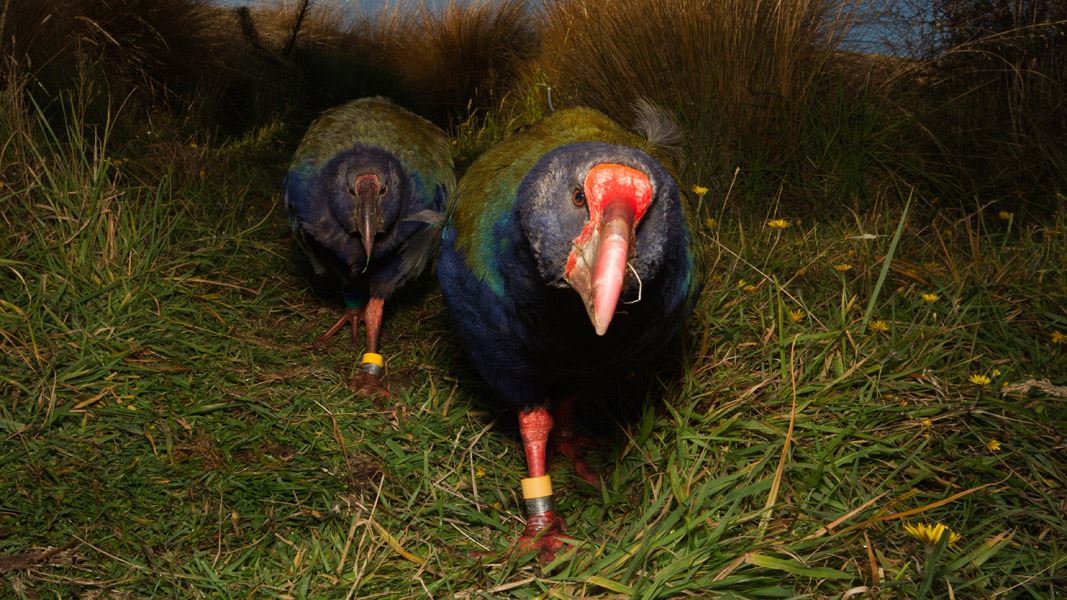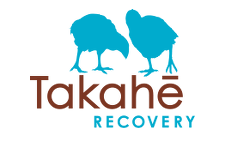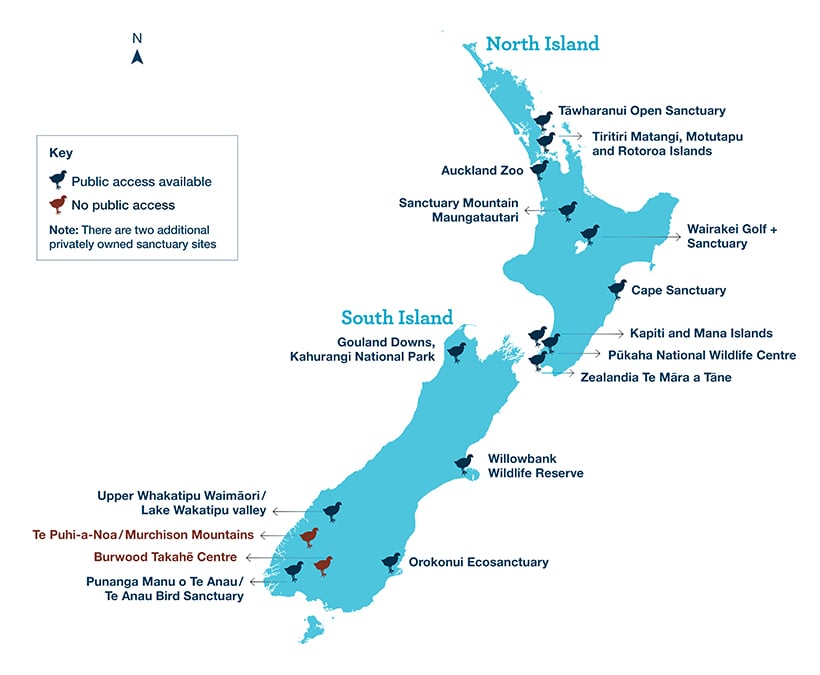
Introduction
Thanks to the conservation efforts by generations of New Zealanders, you can visit takahē in the wild and public sites across New Zealand. Not bad for a bird that was once considered extinct.
These flightless birds, with their vibrant blue and green plumage, have become a symbol of successful wildlife conservation. After being thought extinct for nearly 50 years, takahē were rediscovered in 1948 in a remote valley of the South Island. Since then, intensive efforts have been made to protect and increase their population.
Today, these efforts allow visitors the unique opportunity to observe takahē in their natural habitats and specially designated sanctuary sites.
To plan your visit and learn more about where you can meet a takahē, explore the map and locations below.
